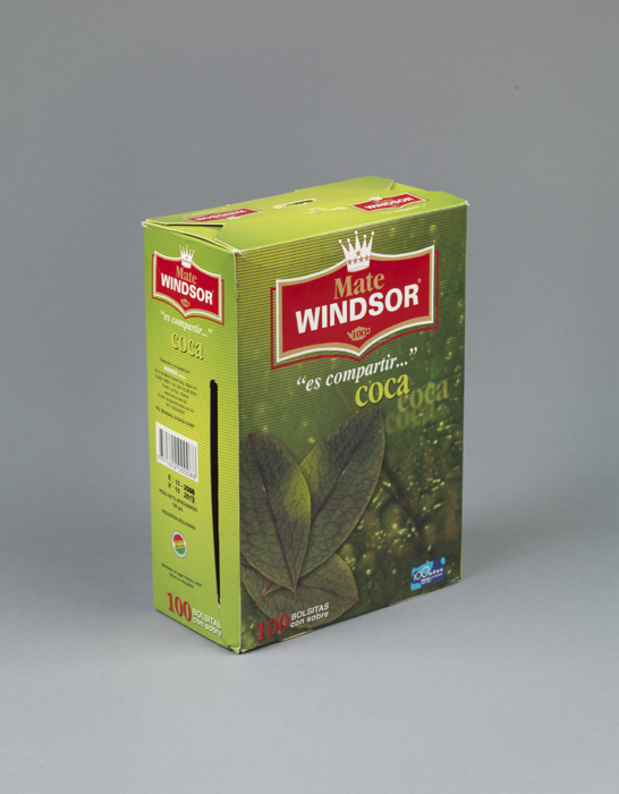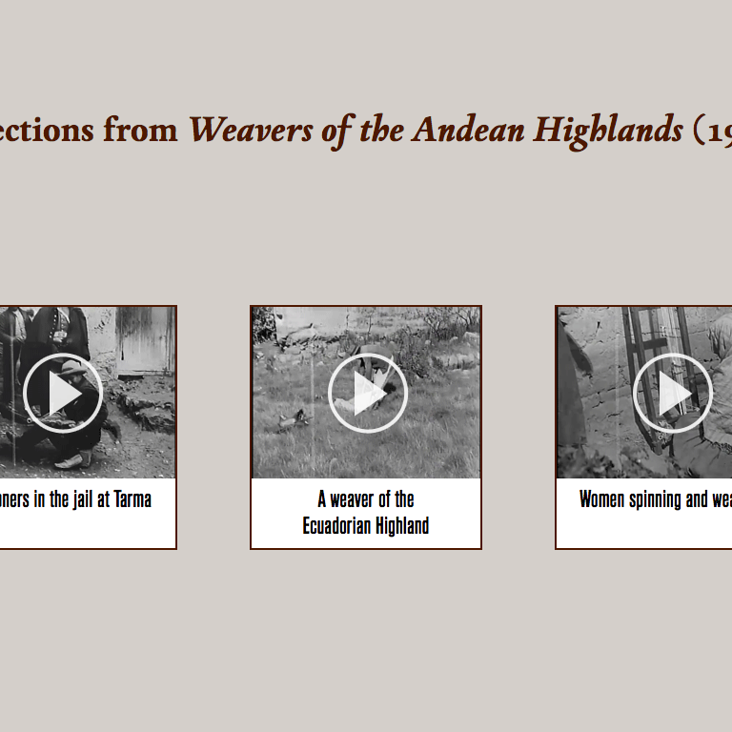“Mate Windsor” coca tea box
Peru, 2011
Cardboard
3 x 5 ⅜ x 7 ⅞ in. (7.5 x 13.8 x 18.8 cm)
Private collection
“Tourist” chuspa
Arequipa, Peru, 2013
Synthetic fibers, zipper, wooden buttons; machine-made, with embroidery
31 ⅞ x 11 in. (81 x 28 cm)
Purchased from vendor in tourist market
Private collection
Coca bag with strap
Pocoata, Bolivia, 20th century
Wool; double-faced warp pattern, braided strap
20 ⅞ x 7 ⅛ in. (53 x 18 cm)
Collected by Grace Goodell, accessioned 1969
American Museum of Natural History, 40.1/3572
Coca bag
Q’ero Village, Department of Cuzco, Peru,
Wool; three-warp-patterned stripes with inti motifs
35 ⅜ x 7 in. (90 x 19 cm)
Collected during La Prensa–sponsored expedition to Q’ero, accessioned 1956
American Museum of Natural History, 40.0/8907
Two bags tied together
Nazca Valley, Peru, 100 BC–AD 700
Camelid fiber, cotton; double-faced tapestry with eccentric wefts, plied and beaded fringes, braided strap.
Large bag: 45 ¼ x 5 ½ in. (114.9 x 14 cm);
Small bag: 3 ¾ x 3 ¾ in. (9.5 x 9.5 cm)
Division of Anthropology, American Museum of Natural History, 41.0/5461
Miniature bag
Ancon, Peru, pre-Hispanic
Wool; warp-faced plain weave
2 x 3 in. (5 x 9 cm)
Collected by Adolph Bandelier, accessioned 1894
American Museum of Natural History, B/4728c
Incomplete woven coca bag, loom, and ruqui (bone weaving tool)
Oruro, Bolivia, 20th century
Wood, camelid bone, wool; double-faced warpfloat patterned stripes, plain weave
Bag: 9 x 5 in. (23 x 13.5 cm)
Collected by Grace Goodell, accessioned 1969
American Museum of Natural History, 40.1/3539 A–H, J-K
Spindle and whorl with spun vicuna wool
Puno, Peru, 19th century
Wood, clay, vicuna thread
7 x 1 ⅝ in. (19 x 4 cm)
Gift of E. P. Mathewson, accessioned 1901
American Museum of Natural History, B/9584
Coca bag
La Paz, Bolivia, 20th century
Leather, metal, pigment, thread
11 x 8 ⅝ in. (30 x 22 cm)
Gift of Professor Robert Peele, accessioned 1937
American Museum of Natural History, 40.0/4932
Bag with carrying strap
Island of Taquile, Peru, 20th century
Wool; warp-faced plain weave, complementary warp-weave warp-patterned strap; edge binding of two-strand twining
30 x 13 ⅜ in. (78 x 34 cm)
Gift of Mrs. Harry Tschopik, accessioned 1955
American Museum of Natural History, 40.0/8870
Jar with depiction of human face chewing coca
Chimu/Inca, Peru, AD 1100–1470
Clay; incised
6 x 5 x 8 in. (16.4 x 13.8 x 20.1 cm)
American Museum of Natural History, B/8875
“Campesino Chewing Coca Leaves”
Martín Chambi
photographed near Cuzco, Peru, 1939
Martín Chambi Family Archives










.jpg,732x732,c)





































